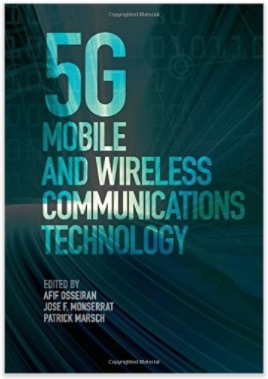Recent Posts
The Future Of Wireless Technology Is Not Just About The Hardware
Posted by on
 Wireless technology is undergoing tremendous changes. The cellular market is moving from 3G to LTE, LTE Advanced and LTE Advanced Pro to improve data rates and reduce power, all the while looking to the next generation 5G technology. This will bring many more frequency bands at higher frequencies for even higher data rates. This will also bring in other technologies currently used in unlicensed frequency bands such as Wi-Fi.
Wireless technology is undergoing tremendous changes. The cellular market is moving from 3G to LTE, LTE Advanced and LTE Advanced Pro to improve data rates and reduce power, all the while looking to the next generation 5G technology. This will bring many more frequency bands at higher frequencies for even higher data rates. This will also bring in other technologies currently used in unlicensed frequency bands such as Wi-Fi.
At the same time, operators and developers are looking at advances to cellular wireless to provide low cost, reliable and scalable wireless links for the Internet of Things (IoT). For these applications it is power consumption and battery life that is the driving factor, and narrow band solutions are now emerging. Alongside these are the latest evolutions to specifications such as Bluetooth and ZigBee that are also targeting IoT applications. Bluetooth 5 promises greater range and data rates with lower power, while ZigBee 3.0 brings lower power to the mesh networks.
All of this can give the design engineer a major headache. The choice of wireless protocol for low cost, low power, global applications can be complex and not particularly stable.
One of the ways module makers are trying to tackle this challenge is through a common footprint. Sierra Wireless, for example, has deliberately taken a module approach to all its wireless developments to take this into account. The range of 2G, 3G, and 4G embedded modules in the AirPrime HL family offer everything device manufacturers need to meet essential connectivity requirements. With a common form factor for all the different cellular technologies, small size, low-power consumption and enhanced RF performance, there are also options for GNSS navigation from the US GPS and Russian GLONASS satellite systems as well as worldwide coverage. Read more...
5G Mobile and Wireless Communications Technology
Written by leading experts in 5G research, this book is a comprehensive overview of the current state of 5G. Covering everything from the most likely use cases, spectrum aspects, and a wide range of technology options to potential 5G system architectures, it is an indispensable reference for academics and professionals involved in wireless and mobile communications.
Global research efforts are summarised, and key component technologies including D2D, mm-wave communications, massive MIMO, coordinated multi-point, wireless network coding, interference management and spectrum issues are described and explained.
The significance of 5G for the automotive, building, energy, and manufacturing economic sectors is addressed, as is the relationship between IoT, machine type communications, and cyber-physical systems. This essential resource equips you with a solid insight into the nature, impact and opportunities of 5G.
 Loading... Please wait...
Loading... Please wait...

